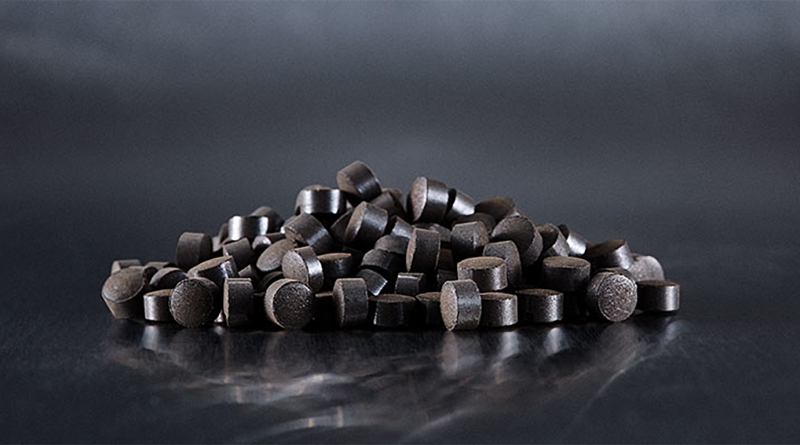Advancing Blue Fuels: Topsoe’s Role in the Energy Shift
As the world continues its energy transition, finding innovative ways to decarbonize industries is becoming ever more critical. This is where Topsoe A/S, a leader in advanced decarbonized process technology, plays a vital role. For decades, this Danish pioneer has been reshaping the industry by developing catalysts and process technologies that accelerate the shift to cleaner energy. With an unwavering focus on research and development, Topsoe delivers cutting-edge solutions to help industries lower carbon emissions. Whether advancing greener manufacturing techniques or enabling fully carbon-neutral operations through significant investment in R&D, Topsoe remains committed to leading the way forward. Henrik Rasmussen, Managing Director for the Americas, shares insights into the company’s involvement in blue fuel production.
“Blue fuels involve technology that utilizes well-established methods for producing hydrogen and ammonia, with natural gas as the primary feedstock. Natural gas is widely available and cost-efficient, particularly in the US. For these fuels to earn the ‘blue’ classification, carbon capture and underground storage (CCUS) techniques are integrated into the production of ammonia and hydrogen. With modern technology, large-scale plants can capture and store over 99 percent of the CO2 emissions (Scope 1) from natural gas use. This allows the plant to operate with near-zero carbon emissions. However, for blue fuels to be truly effective, we must also address Scope 2 emissions—leaks that can occur as natural gas travels through pipelines to the facility. Some wellheads may experience methane leakage, which contributes to emissions. To mitigate this, we encourage our clients to work closely with their natural gas suppliers to certify the well and implement emission-reducing measures.”
“We have a strong collaboration with Fidelis H2, which brings additional technology designed to reduce carbon intensity beyond the plant’s core processes. The Topsoe-licensed facility, known as Inside the Battery Limit (ISBL), represents the plant’s core operational area. It includes essential components and processes. In contrast, Outside the Battery Limit (OSBL) refers to the supporting infrastructure, such as cooling towers, wastewater systems, control rooms, and other auxiliary equipment required to run the plant. By integrating Fidelis H2 technology into the OSBL, we can significantly lower the overall carbon intensity for both the ISBL and OSBL, effectively offsetting Scope 2 emissions from the wellhead. This ensures that the hydrogen and ammonia we produce are genuinely carbon-neutral,” he explains.
Blue Wave
Henrik discusses the impact of the recently enacted Inflation Reduction Act (IRA) on the industry and Topsoe’s business. This legislation, part of the US government’s climate strategy, incentivizes the production of blue and green fuels. “The introduction of the IRA has led to a surge of global projects being directed toward the US. The IRA is a game-changer for international companies looking to establish and operate blue and green fuel plants in the US. The incentives provided have sparked tremendous interest and have allowed us to license numerous plants over the past eight to ten months. In short, the IRA has significantly accelerated the adoption of blue fuel technology, which will play a crucial role in reducing greenhouse gas emissions,” he states.
This policy-driven shift has spurred substantial growth for Topsoe. However, Henrik envisions even greater developments ahead. “I believe that blue ammonia will become the new liquefied natural gas (LNG) in the market. The US currently has numerous LNG terminals along its coastlines, facilitating the global transportation of LNG. Many countries depend on imported natural gas due to domestic shortages. However, I expect that blue hydrogen and blue ammonia will claim a larger share of the market because they offer a decarbonized alternative. Over the next decade, I anticipate the US will develop hundreds of blue plants, though the pace of construction will be limited.
“Managing large-scale, multi-billion-dollar projects in the chemical industry requires specialized expertise and substantial resources, including major engineering, procurement, and construction (EPC) firms and skilled labor—both of which are currently in short supply. While licensing 100 plants is achievable for Topsoe, the EPC sector lacks the capacity to construct them all simultaneously. Realistically, we may only be able to build 10 to 15 plants at any given time. To meet growing demand effectively, a phased approach to construction will be necessary, allowing for the gradual, scalable development of these projects.”
“Our mission is to support the energy transition while acknowledging that fossil fuels remain an integral part of daily life. Many of the products we rely on, from clothing and electronics to pharmaceuticals, originate from fossil fuel derivatives. While green alternatives are emerging, transitioning completely will take time. We are committed to making incremental progress and are actively expanding our workforce to accommodate rising demand. Fortunately, while the demand curve is steep, it remains manageable, allowing us to allocate resources effectively,” he adds.
Promising Approach
As a closing thought, Henrik shares his perspective on companies primarily engaged in fossil fuels that may be skeptical of the energy transition. “It’s crucial to understand that this shift isn’t a competition between green energy and fossil fuels. A diversified energy mix is necessary as we move forward. As a global society, we consume vast amounts of energy, and we cannot overlook the essential role of the fossil fuel industry in meeting current needs. However, integrating blue hydrogen into fossil fuel production will substantially lower its carbon footprint.
“To further reduce emissions, direct air capture (DAC) is a promising approach. DAC extracts CO2 directly from the atmosphere and either sequesters it underground or repurposes it for fuel production. By combining blue hydrogen with CO2 extraction, we can neutralize emissions while supporting developing countries that still rely heavily on fossil fuels. While this isn’t a purely green solution, it aligns with circular economy principles as we progressively transition to more blue and green energy solutions in the years to come,” he concludes.
Through determination and collaboration, Topsoe is well-positioned to achieve its ambitious vision of global decarbonization—leveraging accessible blue fuels today while driving forward green solutions for the future.
